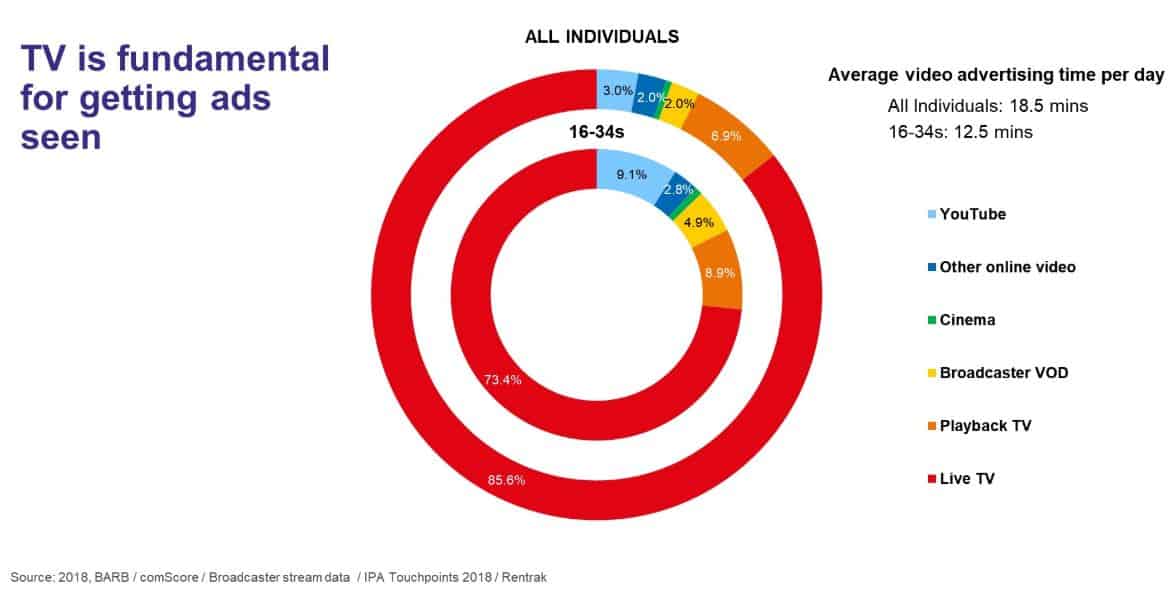Advertising has without doubt been transformed irrevocably by digital connectivity. Consumer product brands, service providers, organisations of any nature, and even individuals, can become their own media owners. Anyone with access to the internet can create and distribute unique content to generate audiences and build a bespoke following. What does it mean for the empirical guidelines and “rules” about advertising that evolved in the pre-digital era?
Some advertising commentators appear to believe the established practices are redundant, a distraction, a nostalgic cling on to the past. As are the traditional ‘legacy media’ themselves. Other more seasoned operators in the sector are convinced that a new generation of advertisers are so overwhelmed by the digital opportunities to measure audience numbers and behaviour that they favour performance metrics over establishing what their advertising aims and strategy ought to be in the first place.
Effective advertising is carefully planned
An advertising strategy seeks to answer four key questions;
1. What do we want to achieve? This relates to the company’s overall Business Objectives, and needs to be SMART: Specific, Measurable, Achievable, Realistic, Timetabled.
2. What’s the creative message(s) that will achieve our aims?
3. How are we going to deliver those messages – which communication channels and techniques to use?
4. Who should we be talking to, who are our prime prospects?
I’m going to focus on the latter two points of delivering messages and targeting the key recipients, because it appears to me that the two questions are getting muddled together and resolved with one decision. Advertisers are increasingly choosing communication channels because of the way they can be targeted and their effectiveness measured, rather than due to their inherent communication qualities and their relevance to the advertising objectives.
Pre-digital media
A wide range of advertiser scenarios require different strategies and executions, though when I was planning how to spend £ millions for top advertising agency clients there were two basics: did an advertiser want to build a long-term brand image – stake out a position in their marketplace with a stand-out personality; or stimulate short-term sales or some other behaviour (e.g. apply for a business award, request a holiday company brochure, join a book club).
Mainstream mass-media advertising, and its techniques, was handled quite simplistically. There weren’t many research-led “scientific” solutions. To make it easy for advertisers to understand what their agency advisers were guiding them to do, there was high-scale adoption and use of simple acronyms such as AIDA: Awareness, Interest, Desire, Action.

This mantra was applied just as much to infrequent and well-researched purchase decisions such as buying a motor car or international property investment, as to frequent repeat-purchase grocery products including breakfast cereals, beer, confectionery and washing-up liquid. So there was undoubtedly plenty of room for advertising to raise its game as a business discipline to be taken more seriously in the client boardrooms.
Frequency vs Recency
In practice, the aims of either building a long-term presence in people’s minds or generating a more direct response, required different strategies. The first aim was achieved through a planning emphasis on the number of times a message was seen or heard – Frequency Planning. Achieving a more direct response was better achieved by an approach based on Recency Planning. This requires achieving exposure to advertising at a time or place relevant to short-term desired actions, and was championed by the late Erwin Ophren.
Recency Planning is about placing each individual opportunity for exposure to the advertising in a place and/or at a time when it is most likely to have its greatest effect. Legacy media examples includes simple executions like these:
- Advertising d-i-y stores and products in the run-up to long weekends when people would be more likely to take on home improvement tasks.
- Running tv commercials for breakfast cereals on breakfast-time tv channels.
- Putting advertising for cars and motor accessories on radio at times when there is the highest proportion of the audience listening in-car.
- Advertising specialist sports equipment in specialist magazines, whether it’s field sports, ice hockey, tennis, golf, running marathons, whatever.

The digital age
Fast forward to today, and the mass of online content and ubiquity of social media. Any business or other type of organisation, and indeed any individual person that seeks an online presence, has a multitude of opportunities to position themselves adjacent to or within relevant content. Or to actually provide content itself to satisfy people searching for solutions to their personal challenges, whether it’s home repairs, make-up tips, raising a family, dieting, where to shop for particular items, improve sports or business performance, or advice on virtually anything else. As well as creating influential social media accounts, people can even have/be their own YouTube channel!
The collection and management of mass digital data also enables specific targeting on individuals by their known location, interest, hobbies, pastimes, and attitudes and opinions about many issues including politics, as well as standard demographic data of age, socio-economic class and gender. Targeting the “right people” to begin with can be more specific. Monitoring their behaviour after exposure to certain messages is also possible in ways that were unheard of 10 years ago.
The rush to embrace specific targeting of highly defined individuals and transparency of accountability has brought us to a tipping point at which the benefits of online digital advertising – including remarketing, the impact of online influencers, email marketing, pay per click and all the rest – are thought not to just outweigh the usefulness of pre-digital legacy media, but to make them redundant.
Institutional aversion to running advertising on legacy media was brought home to me when a marketing student I mentor in one of the UK’s ten largest universities told me they are taught to never even consider advertising on television, billboards, radio or in hard copy print. “Online = good; offline legacy media that existed before = bad.” I’m not making this up.
Digital brands use legacy media
Though let’s have a reality check. YouTube is highly responsible for the growing trend to on-demand viewing, particularly among younger adults, in place of watching standard television with its linear scheduling of content. Their research-based report “Reach more than just viewers” encourages advertisers to target viewers by their hobbies, interests and passions, rather than by set times of day or day of week. Yet, as at March 2018, television was still delivering 94.6% of the total video advertising audiences in the UK (source: the generic television marketing body thinkbox).

In 2018 the biggest spending sector on UK television advertising was online businesses. Amazon alone spent over £60 million, which was a 21% increase on its tv adspend in 2017. They clearly see benefits from expensively using more than just their own part of the media advertising landscape to project a strong brand image rather than just influence short-term decisions and actions.
What’s your “Why”?
In fact the brand positioning proposition, conveying what a brand stands for and thus its role in a person’s lifestyle, has been updated as its “Why.” This is a trend influenced strongly by Millennials and it requires brand owners and service providers to not only explain their products’ benefits and why they should be valued, but why they are in business providing them in the first place.
More people are increasingly making moral and ethical judgments on brand behaviour, and brands are increasingly aware of any poor public opinion of them. UK supermarket chain Tesco was rocked by the revelation that some of its 2019 Christmas cards were made by “slave labour” in a prison in China. Swedish fashion brand H&M is also investigating similar claims.
A brand’s “Why” and the values it stands for is an on-going communication requirement, not tied to short-term purchase or usage decisions.
New data shows “brands with purpose” are expected to grow at twice the rate of those without some focus on social or environmental responsibility. The reasons a brand’s “Why” is so important is explained by Simon Sinek in his now legendary TedTalk. The 18 minute version of this has been viewed almost 48 million times.

Simon Sinek explains the importance of a brand’s “Why”
Transformation and decentralisation of the advertising industry has manifestly given any organisation or individual opportunities to personally connect with potentially millions of people, or maybe what’s more important to some is to reach out to a much smaller group of key influencers. I work at it myself through managing clients’ social media accounts and creating online content (inbound marketing).
Technology has changed the way we connect with the world and it has transformed the way advertisements are broadcast. There was always B2B and B2C, now we can also use C2C. But I do not agree that is a reason to discard the benefits of legacy media that were expensively and effectively developed by major brand and business owners.
I’m also quite certain that when it comes to spending their advertising budgets, big-spending clients will expect to work with advisers who understand and know how to use legacy media.
BOLD Awards 2020
Advertising is one of 12 categories in the international BOLD Awards 2020 that aim to recognise top companies, projects and individuals powering breakthroughs around the world.
The closing date for entries is January 15, after which there will be a round of public voting – which we hope you will take part in. A panel of international judges will then determine the category winners, who will receive their awards at a black-tie ceremony on 27th March 2020 in Venice, Italy.
Want a chance to be there? To see all 12 categories and to submit your entry go to https://bold-awards.com/bold-awards-2020-categories/.







